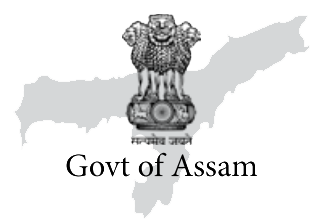November 24, 2022 was the 400th birth anniversary of Lachit Barphukan, the valiant commander-in-chief of the Ahom Kingdom in the fight against the mighty Mughals. His bravado merits a recall, for all times to come.
He began his attack on them in the present Guwahati and pursued them up to the Manas river, a feat unparalleled in history. The Mughal army was led by the renowned warrior Man Singh, the son of Jai Singh, the king of Amber. Lachit was the most efficient son of Mumai Tamuly Barbarua, the first Barbarua of Ahom administration appointed to assist and carry out reformative measures to strengthen the Ahom administration. At this time, at the advice of Barbarua, Assamese being the common language of the diverse ethnic groups was made the court language along with Tai Ahom thus cementing a regional sentiment in the hearts of the people. Lachit, having been brought up in the disciplined royal atmosphere under an active, intelligent and extremely duty-bound father, would prove to be an intelligent, far-sighted and exceptionally capable commander in the battle against the Mughals. It was his deep sense of love and concern for the safety of the motherland, a sense of duty with indomitable courage and presence of mind that enabled Lachit the final onslaught on the Mughals.
It may be mentioned that Emperor Aurangzeb, immediately after settling his tussle with his brothers for the throne of Delhi appointed Mir Jumlah, the most powerful of his nobles, as the Governor of Bengal and urged him to recapture the territories occupied by the Kochs and the Ahoms. Aurangzeb’s motive was also to keep the potential rival Mir Jumlah occupied and not return from the forbidden kingdom of the Ahoms. Mir Jumlah, commanding a huge army consisting of thousands of cavalry, infantry, war-boats, vessels and ammunition, had an extraordinary successful campaign; first recapturing Guwahati on February 4,1662 and then seizing the Ahom capital Garhgaon on March 17, 1662, when the Ahom king fled to Namrup.
It was argued that contrary to the convention, the leadership to challenge the Mughals was not given to someone belonging to a royal Ahom family but to one Manthir Bharali, hence the debacle because officers may have been nursing their ruffled feathers. However, once the rainy season set in Assam, Atan Buragohain, the most successful Prime Minister, guided the hit and run guerrilla warfare on the Mughals which made Mir Jumlah to retreat and agree to a treaty. This treaty dated January 23, 1663 resulted in Ramani Gabharu, the only daughter of Swargadeo Jaydhwaj Singha, being brought to the imperial harem at Delhi. She was later married as Rahmat Banu Begum to Sultan Muhammad Azam, the third son of Aurangzeb. Moreover, gold, silver, elephants, etc., were to be paid immediately and annually to the Emperor in Delhi and that Mir Jumlah and his forces would withdraw to Guwahati. Mir Jumlah died on his way back before reaching Dacca.
This adversity, a first experience ever for the Ahom kingdom, gravely pained Swargadeo Jaydhhwaj Singha and the people alike. At the advice and initiative of Rajmantri Atan Buragohain, a long time preparation for acquiring experience in the art of warfare, production of food, armoury and war-boats as well as construction of forts at strategic places started. On the other hand, continuing to fulfil the humiliating conditions of the Treaty by accepting the supremacy of the Mughals had become unbearable for the Ahom kingship. Swargadeo Chakradhwas Singha spotted Lachit to be the most suitable Barphukan to undo the loss of prestige.
Under Lachit, the Ahoms easily overrun Mughal forts at Kajoli, Sonapur, Panikhaiti, etc., and on November 4, 1667 attacked the Mughal fort at Itakhuli on the south bank of Brahamputra at Saraighat, slaughtered the enemy soldiers, while a few of them fled beyond Manas. Just the previous night, the Assamese spies had poured water into the cannons of the Mughal fort thereby making them incapable of firing shots.
Expecting an adverse and strong reaction from the emperor in Delhi, Lachit Barphukan and Atan Buragohain started strengthening the fortification surrounding Guwahati. The Mughal Army, as expected, arrived in huge numbers. Several attempts were made by Ram Singh through negotiation or force to enter into Guwahati but they failed. The final attempt to enter Guwahati through Andharubali Fort in March, 1671 had been thwarted by Lachit Barphukan in spite of his suffering from high fever. The Mughals were driven down to Manah for good. Lachit knew that the Ahom army would not be able to resist the huge columns of Mughal cavalry and infantry fighting on land. It had proved true in the battle at Alaboi earlier. As such, while Guwahati all-around had been protected with unflinching forts, Lachit compelled the Mughals to fight, finally, in water; the Assamese army provided with innumerable number of boats led by Lachit Barphukan struck down the Mughals in Brahmaputra at Saraighat. Ram Singh, while retreating praised the enemy that ”every Assamese soldier is an expert in rowing boats, in shooting arrows, in digging trenches, and in wielding guns and cannons” who needed only a brave, valiant and worthy commander like Lachit Barphukan, the pride and glory of Assam. (The writer is a retired professor of Gauhati University)













